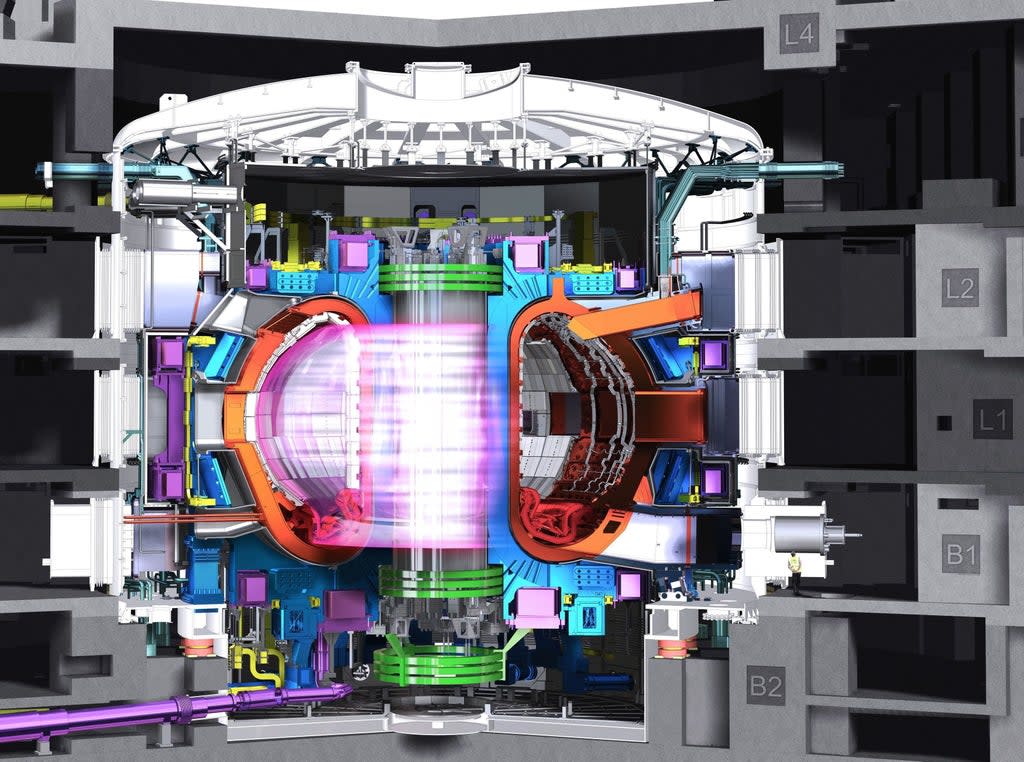Scottish site in the running to become pioneering nuclear fusion station

A nuclear fusion energy station could be built in Scotland as the UK’s Atomic Energy Authority looks to develop low carbon forms of power.
The UK Government will select one of five potential locations to build the prototype fusion power plant, including a site at Ardeer, near Stevenston, on the Ayrshire coast.
Other sites in contention include Goole in Yorkshire, Moorside in Cumbria, Ratcliffe-on-Soar in Nottinghamshire and Severn Edge in Gloucestershire.
Technical inspectors will make a final visit to Ardeer next week before making a site recommendation to the UK Government’s Department for Business Energy and Industrial Strategy in the spring.
Five sites have been shortlisted as the potential future home of the UK’s prototype fusion energy plant – the Spherical Tokamak for Energy Production, or “STEP”.
• Ardeer
• Goole
• Moorside
• Ratcliffe-on-Soar
• Severn Edge
Press Release https://t.co/l7GDbJLigO #StepHome pic.twitter.com/oVpiyTD3Wt— UK Atomic Energy Authority (@UKAEAofficial) October 14, 2021
Energy Secretary Kwasi Kwarteng will announce the final decision.
Known as the Spherical Tokamak for Energy Production (Step), the project aims to prove that fusion technology can produce energy for the electricity grid and pave the way for similar, commercial power stations.
The nuclear technology works by fusing two types of hydrogen atoms together to produce heat that can then be converted into electricity, with the main waste product being helium.
A total of £222 million in preparatory funding has been allocated to select a site and develop a concept design, with a “considerably higher quantum of money” then required to build the working power plan by 2050, according to Leon Flexman of the United Kingdom Atomic Energy Authority.
Explaining the Step project, Mr Flexman said: “What we’re looking at doing is changing from effectively a very big and proven laboratory experiment that only works for a short space of time and, frankly, requires much more electricity to make it work than you actually get out of it.
“So the next step is to turn that into a fusion machine that you can connect to the grid and demonstrate that you can get more power out than you put in.”
A UofG-supported bid to base a prototype fusion energy plant at the Ardeer peninsula in @north_ayrshire has passed the second round of shortlisting by @UKAEAofficial.
Read more about this exciting project 👉 https://t.co/UKlgvZZyKA pic.twitter.com/MxKaBUpGAr— University of Glasgow (@UofGlasgow) October 14, 2021
Asked about how safe fusion energy is, Mr Flexman said: “It’s completely the opposite to nuclear fission where you’re splitting atoms to release energy and then, unfortunately, as a result of that you get radioactive waste issues, spent fuel that you need to manage and the possibility of that reaction carrying on and having to put lots of safety measures around it to control it.
“Don’t get me wrong, we’re very good in the UK, it’s fully understood how you do that and put those safety measures in place.
“However, you don’t need any of that with fusion because it’s the opposite. You have to create high very high temperatures but in a very small area – there’s like a gram of fuel really involved to make this reaction happen.”
He said that parts of the machine involved in nuclear fusion would be radioactive but insisted it was “low levels of radioactivity” that are comparable to medical equipment that was “perfectly manageable on site”.
Mr Flexman added: “It’s a different kettle of fish entirely to nuclear fission in terms of that levels of radioactivity – you’re talking about radioactive materials that will have half lives of 12 years or around that sort of magnitude, rather than the thousands of years that you get with nuclear fission.”
The proposed site would need to be at least 100 hectares (247 acres), but North Ayrshire Council say there is a possible 600 hectares (1482 acres) available on the Ardeer peninsula.
Ahead of the visit and public, community consultations by the Atomic Energy Authority, the council’s head of economic growth, Caitriona McAuley, said the current estimates were that the project would create 3,500 jobs during the construction period and then 1,000 when the site was operational.
Ms McAuley added: “We feel that there is a significant opportunities to lever in additional public and private sector investment on the back of that.
“We also understand that this is about the development of a global market in fusion energy and for the Step Ardeer site in North Ayrshire to be the the heart and foundation of that is, obviously, really exciting, not only for North Ayrshire but for the West of Scotland.”

 Yahoo News
Yahoo News 
